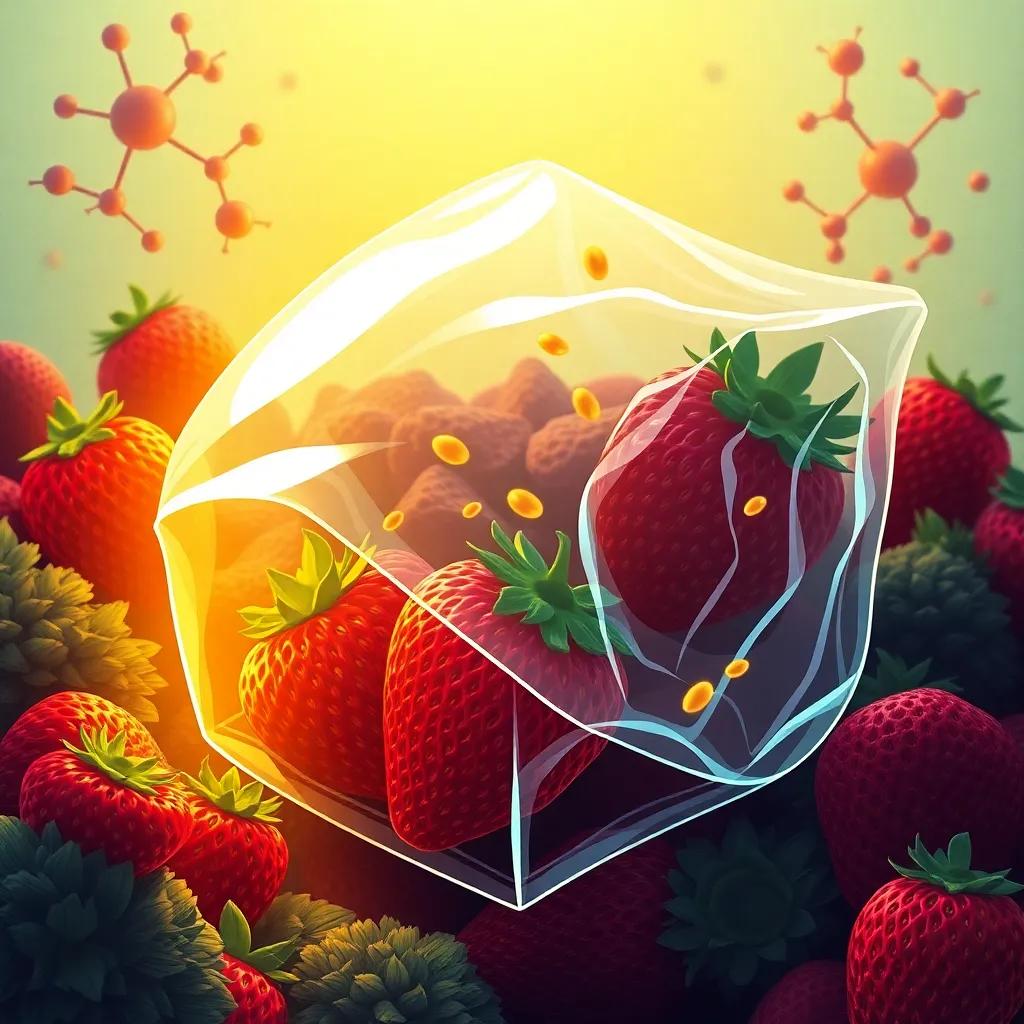New chitosan-based nanocomposites with turmeric oil and zinc oxide nanoparticles show unprecedented food preservation potential while addressing safety concerns about nanotechnology in food packaging.
Groundbreaking research reveals plant-based nanocomposites could extend shelf life of perishables by 50% while meeting stringent EU safety standards.
The Food Preservation Breakthrough We’ve Been Waiting For
In laboratories from Mumbai to Cambridge, scientists are perfecting what could become one of the most significant advancements in food technology this decade. Chitosan-polyvinyl alcohol bionanocomposites enriched with turmeric oil and zinc oxide nanoparticles are demonstrating remarkable potential to revolutionize how we preserve perishable foods.
Staggering Results in Shelf-Life Extension
A 2024 study published in Food Hydrocolloids revealed these nanocomposites reduced microbial growth in strawberries by 99% over 14 days at 4°C
, effectively doubling their shelf life. Dr. Priya Sharma from IIT Bombay, lead author of the study, explains: What makes this system unique is the synergistic effect between turmeric’s curcuminoids and zinc oxide nanoparticles. Together they create a multi-target antimicrobial mechanism that’s far more effective than conventional preservatives.
Addressing the Global Food Waste Crisis
The timing couldn’t be more critical. According to the 2023 FAO report, approximately 1.3 billion tons of food
are lost annually worldwide. The Global Food Safety Initiative’s March 2024 report identifies nano-enhanced packaging as a top emerging technology
for reducing post-harvest losses, particularly in developing nations where refrigeration infrastructure is limited.
How the Technology Works
The magic lies in the combination of three key components:
1. Chitosan-Polyvinyl Alcohol Matrix
Derived from crustacean shells and plant sources, this biodegradable polymer blend forms the structural base of the nanocomposite. Unlike conventional plastics, it allows controlled release of active compounds while being compostable after use.
2. Turmeric Oil’s Multifunctional Role
MIT researchers published findings in ACS Nano (April 2024) showing turmeric oil’s synergistic effect with ZnO nanoparticles enhances antimicrobial activity by 40%
compared to individual components. The oil also provides antioxidant benefits that help preserve nutritional quality.
3. Zinc Oxide Nanoparticles
The EU’s EFSA recently approved zinc oxide nanoparticles for limited food contact applications after rigorous safety testing. These particles disrupt microbial cell membranes while being harmless to human cells at approved concentrations.
Beyond Preservation: The Functional Packaging Revolution
Startups like NanoPack are exploring how these materials might do more than just preserve food. Early research suggests the antioxidant properties could make these composites suitable for creating functional packaging
that actually enhances nutrition in omega-3 rich foods during storage.
Economic Implications
The Indian government allocated $12M in its 2024-25 budget
for research into plant-based nanocomposite solutions, recognizing their potential to transform agricultural exports. For developing nations where 40% of produce is lost post-harvest, this technology could be game-changing.
Consumer Acceptance and Safety
IFIC’s May 2024 consumer survey reveals 58% of respondents would accept nanotechnology
in food packaging if it demonstrably reduces waste while maintaining safety. Regulatory approvals from EFSA and ongoing research are helping address remaining concerns.
Comparison with Conventional Preservatives
Unlike synthetic preservatives that may leave residues, these nanocomposites work through physical mechanisms at the packaging level. They’re also more effective against drug-resistant strains of bacteria, according to recent studies at the National University of Singapore.
The Road Ahead
While challenges remain in scaling production and ensuring complete biodegradability, the potential is undeniable. As Dr. Sharma notes: We’re not just talking about keeping food fresh longer – we’re looking at a systemic solution that could reshape global food systems while reducing environmental impact.


